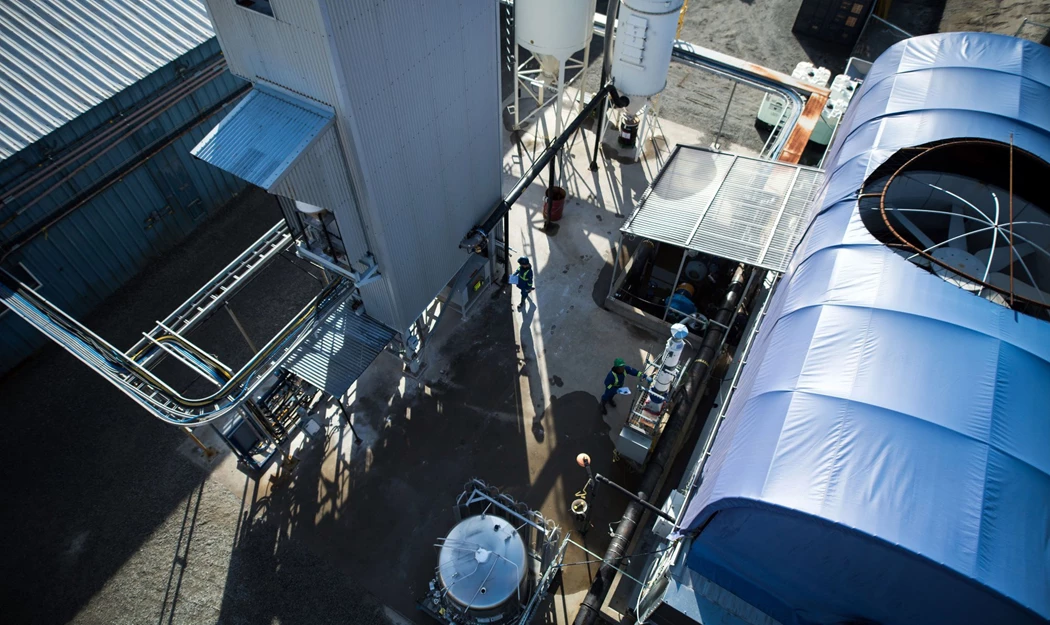With New Urgency, Climate Scientists Recommend Carbon Removal
(Bloomberg) --
The latest scientific assessment from the United Nations Intergovernmental Panel on Climate Change generated plenty of grim headlines on Monday, but at least one of its most important findings went largely unremarked upon. Cutting emissions is paramount, they say—but in order to keep warming below catastrophic levels, we now must also find a way to take billions of tons of the carbon dioxide we’ve poured into the atmosphere back out. That process is known as carbon dioxide removal, or negative emissions.
The IPCC mentioned negative emissions in a special report in 2018. But this time, in the official assessment, they’ve put real urgency behind the finding. “The IPCC has told us that we have failed and conventional mitigation alone will not suffice,” said Julio Friedmann, a senior research scholar at Columbia University’s Center on Global Energy Policy. “Anthropogenic CO₂ removal is what you have left when you have failed at everything else.”
When the IPCC discusses carbon dioxide removal, it refers not only to carbon capture and storage, the process by which carbon coming from an industrial smokestack in high concentrations is trapped through chemical reactions and stored underground. They also mean taking carbon directly out of the air—where it currently lingers at about 415 parts per million.
The report’s authors estimate that the future of a livable planet now relies, at least in part, on our removing anywhere from 100 billion to a trillion tons of carbon already in our atmosphere by end of century, depending on how much more we keep on putting into it. To put that in perspective, Friedmann estimates that we currently have the capability to take out about 5,000 tons a year through direct air capture. There are numerous technologies with the potential to accomplish this, some still being studied—e.g. various applications of crushed minerals—some age-old, such as planting more trees. Most of them are still nascent, however. They're also very expensive. Friedmann says that the best-case scenario is that by the end of the decade, we would be capable of removing 20 million tons annually.
To keep or improve on this trajectory would likely mean major investments in technology. But not everyone agrees that’s where our money should go.
Many environmental groups are deeply skeptical of carbon capture. Most of the 40 million tons in carbon gas captured today by carbon capture and storage (that is from industrial smokestacks as opposed from the plain air) is injected into the ground and used to force more crude to the surface— thus further extending the life of fossil fuels. In July, hundreds of climate activist groups signed a letter encouraging the Biden administration to stay away from that sort of carbon capture.
Earlier this week, Thanu Yakupitiyage, the U.S. director of communications for 350.org, one of the groups that signed the letter, said its position hadn’t changed since the IPCC report. “Often the Biden government and other world leaders start with carbon capture and other false solutions,” she said. “In order to tackle the climate crisis, first we have to keep oil and coal in the ground. It is a matter of priorities.”
But Noah Deich, the co-founder and president of Carbon 180, a carbon removal advocacy group, hopes that the IPCC assessment shows that the time for such “either/or” arguments has passed. “We are simply out of time for picking a preferred method for carbon removal and we simply have to use every tool at our disposal,” he said.
For now the political pendulum in Washington seems to have shifted towards favoring carbon removal. In the bipartisan infrastructure bill the Senate passed this week, there was a record $9 billion plus for carbon capture. Deich notes the bill has $3.5 billion for four regional direct air capture hubs and another $3.5 billion for transport and storage of carbon including money to build a massive pipeline network to carry captured CO₂.
Yet even if some atmospheric carbon dioxide removal moonshot is successful beyond our wildest dreams, the IPCC isn’t offering any kind of panacea. “Sustained net-negative emissions might eventually result in reversing temperature increases,” the report concludes, “but other climate changes would continue in their current direction for decades to millennia.”
There is no point in getting depressed by this, said Friedmann. “Whether we are optimistic or pessimistic, the work looks the same. The IPCC has outlined the problem. Now we can get on with the tasks.”
More stories like this are available on bloomberg.com
©2021 Bloomberg L.P.





